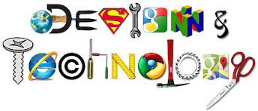Design and Technology

Intent:
“If I had asked people what they wanted, they would have said faster horses.”
Henry Ford
Design and Technology in primary schools develops young children’s skills and knowledge in design, structures, mechanisms, electrical control, textiles and food and nutrition. Design and Technology encourages children's creativity and encourages them to think about important issues.
At St Francis we aim to give our children the skills and abilities to engage positively with the designed and made world and to harness the benefits of technology. The children learn how products and systems are designed and manufactured, how to be innovative and how to make creative use of resources including digital technology to improve the world around them.
Children are given opportunities to use creativity and imagination to make products that solve real and relevant problems within a variety of contexts. Children are also encouraged to take risks and to work collaboratively – becoming more resourceful and capable.
Implementation:
Our whole school curriculum provides children with the opportunities to explore and evaluate different creative ideas developing their skills in textiles, structures, mechanisms, electricity and food and nutrition. In order to make work as relevant as possible, lessons are often linked to the topics being studied in class.
Opportunities are given to enable children to learn about different sculptors and their range of styles. The children’s finished products and pieces are displayed around school to motivate and inspire others and to celebrate the pupils’ DT in their class.
Impact
Our Design and technology curriculum has been developed to show progression between year groups, highlighting the technical knowledge and the skills progression under the different areas of DT. These objectives are shared with the children so that they are clear about what the intended outcomes are and have a means to measure their own work against. Pupils are also introduced to different equipment and skills throughout the year so that they can then make choices around the tools and styles they require to reach an intended outcome.
Outcomes in topic books (where relevant) and discussions with pupils evidence a broad and balanced DT curriculum and demonstrate children’s acquisition of identified key knowledge. In DT lessons, children are constantly reflective and evaluative on their work and can express their choices and any changes they could make to keep improving. Children are encouraged to give meaningful feedback to their peers when DT work is shared. As children progress through the school, they are able to identify their strengths and areas for development in DT.
